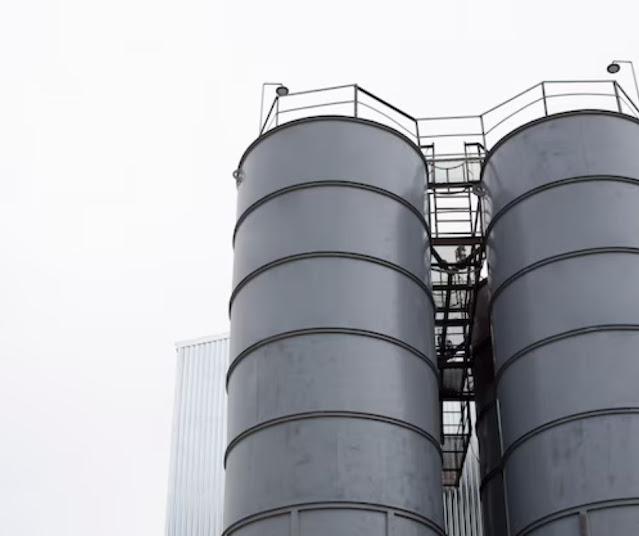The Importance of Water Treatment Tanks in Infrastructure Development
Water Treatment Tanks serve as the linchpin of water treatment systems, vital for eliminating impurities and contaminants from water sources. This section emphasizes their critical role in preserving public health and supporting sustainable development initiatives.
Advanced Technologies Enhancing Water Treatment Efficiency
Innovations in water treatment technology have propelled the capabilities of Water Treatment Tanks to new heights. This segment scrutinizes cutting-edge advancements such as membrane filtration, UV disinfection, and advanced oxidation processes, underscoring their contributions to improving treatment efficiency and water quality.

- Membrane Filtration: Explores the application of membrane filtration technologies like reverse osmosis and ultrafiltration in Water Treatment Tanks, effectively eliminating microscopic contaminants and pathogens from water sources.
- UV Disinfection: Discusses the use of ultraviolet (UV) light for disinfection in Water Treatment Tanks, offering a chemical-free solution for eradicating bacteria, viruses, and other microorganisms present in water.
- Advanced Oxidation Processes (AOPs): Examines the integration of AOPs in Water Treatment Tanks, utilizing potent oxidants such as ozone or hydrogen peroxide to degrade organic pollutants and neutralize harmful substances.
- Smart Monitoring and Control Systems: Highlights the implementation of smart monitoring and control systems in modern Water Treatment Tanks, enabling real-time data analysis, predictive maintenance, and optimized operation for enhanced efficiency and reliability.

Sustainability and Environmental Considerations
In addition to efficiency enhancements, modern Water Treatment Tanks prioritize sustainability and environmental responsibility. This section explores eco-friendly initiatives such as energy-efficient design, water reuse strategies, and sustainable materials usage, fostering resource conservation and reducing environmental impact.
- Energy-Efficient Design: Examines design features and technologies implemented in Water Treatment Tanks to minimize energy consumption, such as optimized pumping systems, energy recovery devices, and renewable energy integration.
- Water Reuse Strategies: Discusses the implementation of water reuse and recycling initiatives in Water Treatment Tanks, promoting the sustainable management of water resources by treating and repurposing wastewater for non-potable applications.
- Sustainable Materials Usage: Explores the use of eco-friendly materials like recycled steel, fiberglass, or high-density polyethylene (HDPE) in the construction of Water Treatment Tanks, reducing environmental impact and enhancing longevity.
Tailored Solutions for Varied Applications
Water Treatment Tanks offer a spectrum of options to cater to diverse applications and site-specific requirements. This segment examines their versatility, from large-scale municipal treatment plants to decentralized systems serving remote communities or industrial facilities.
- Municipal Water Treatment Plants: Explores the design and functionality of Water Treatment Tanks in municipal treatment plants, which handle large volumes of water for distribution to urban populations while meeting regulatory standards for water quality and safety.
- Decentralized Systems: Discusses the role of Water Treatment Tanks in decentralized water treatment systems, providing localized solutions for rural communities, commercial developments, or industrial facilities where centralized infrastructure may be impractical.
- Industrial Applications: Highlights specialized Water Treatment Tanks designed for industrial applications, such as wastewater treatment, process water recycling, or chemical treatment, addressing unique challenges and regulatory requirements specific to industrial processes.
Integration with IoT and Automation
The incorporation of IoT technologies and automation systems has transformed the operation and management of Water Treatment Tanks. This section explores how IoT sensors, data analytics, and automation platforms optimize performance, enhance predictive maintenance, and streamline operations in water treatment facilities.
- Remote Monitoring and Control: Discusses the use of IoT sensors and connectivity solutions to remotely monitor key parameters within Water Treatment Tanks, enabling data-driven decisions and proactive responses to system events.
- Predictive Maintenance: Explores how IoT-enabled predictive maintenance algorithms analyze real-time data to identify potential equipment failures or performance degradation, allowing for proactive maintenance interventions.
- Automation and Optimization: Highlights the role of automation systems in optimizing processes within Water Treatment Tanks, including automated dosing of chemicals, valve control, and filtration optimization, leading to improved efficiency and resource utilization.
Modular and Flexible Design Solutions
Modularity and flexibility are driving forces behind innovations in Water Treatment Tanks. This section explores modular design concepts, prefabricated components, and flexible deployment options that offer versatility and cost-effectiveness in water treatment projects.
- Modular Tank Systems: Explores the advantages of modular Water Treatment Tanks, which can be assembled from prefabricated components off-site, reducing construction time and accommodating future expansions or reconfigurations.
- Flexible Deployment Options: Discusses the versatility of Water Treatment Tanks in terms of installation options, including above-ground, below-ground, and elevated tank configurations, tailored to site constraints and spatial considerations.
- Scalability and Expansion: Highlights how modular design principles allow Water Treatment Tanks to scale up or down in capacity as water demand fluctuates, providing a cost-effective solution for municipalities and industries facing uncertain growth trajectories.
Resilience and Disaster Preparedness
Resilience and disaster preparedness are paramount considerations in water infrastructure planning. This section explores how Water Treatment Tanks are engineered to withstand natural disasters, maintain operations during emergencies, and ensure continuity of water supply to communities in times of crisis.
- Structural Reinforcement: Discusses design features and construction techniques that enhance the structural integrity and seismic resilience of Water Treatment Tanks, mitigating the risk of damage from earthquakes, hurricanes, or floods.
- Redundancy and Backup Systems: Explores the incorporation of redundancy measures and backup systems within Water Treatment Tanks, ensuring uninterrupted operation and water quality assurance during power outages or equipment failures.
- Emergency Response Planning: Highlights the importance of emergency response planning and contingency protocols for Water Treatment Tanks, preparing for potential threats such as chemical spills, contamination incidents, or infrastructure failures.



.jpg)